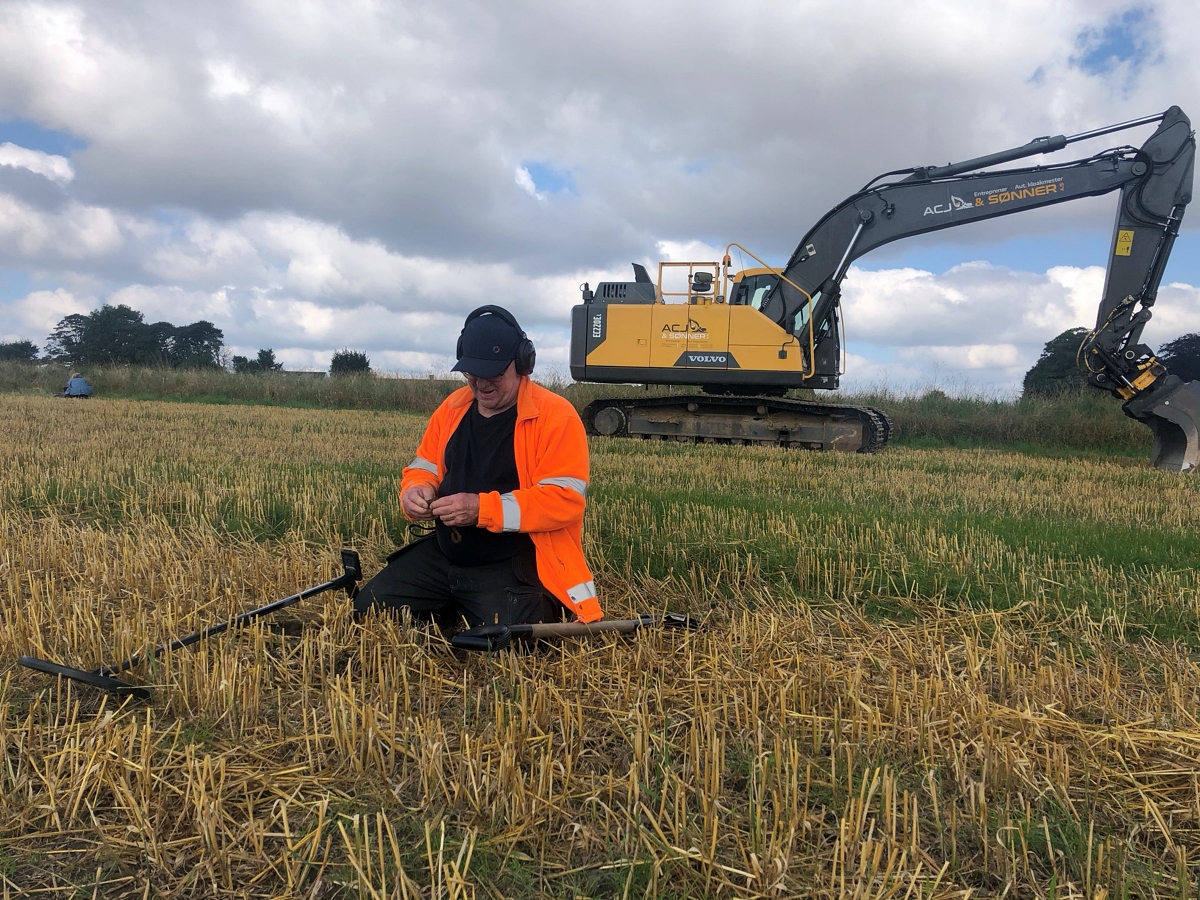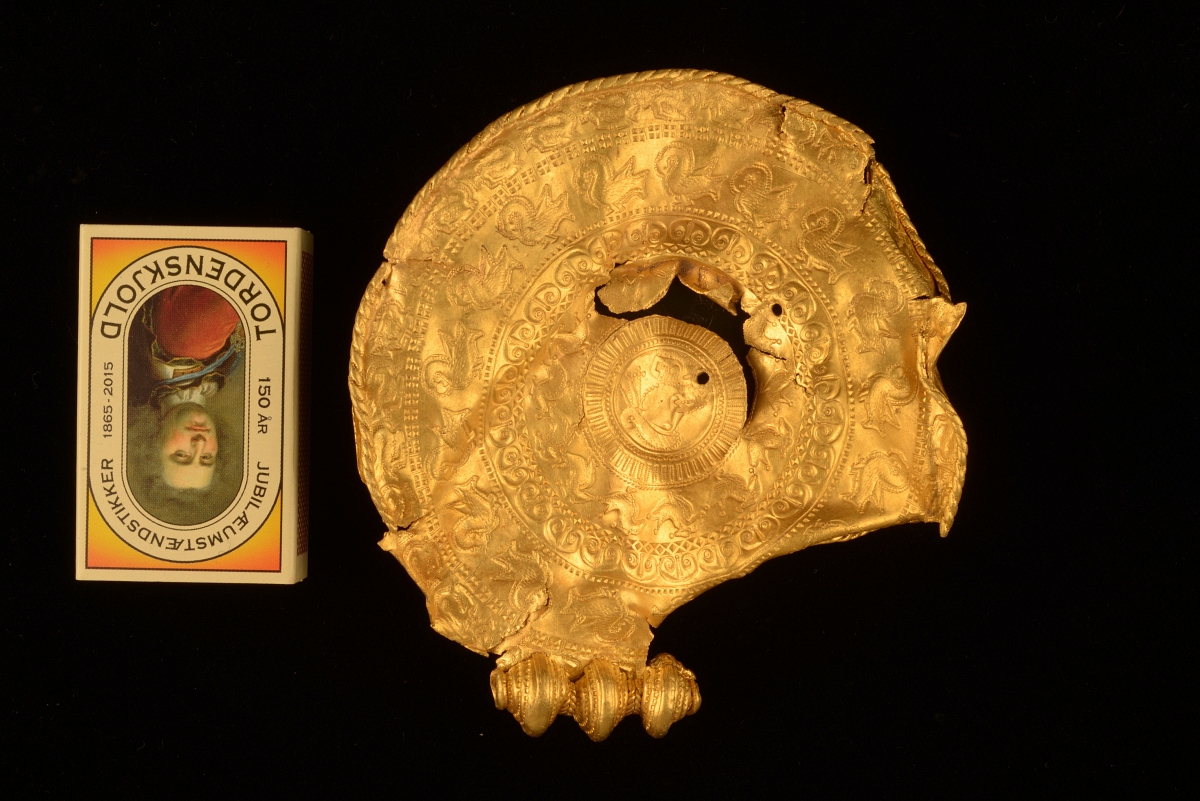Saucer-Sized Gold Plates Found in Danish Treasure Hoard
This is the find of a lifetime.
In Denmark about 5 miles from Jelling in the town of Vindelev a metal detectorist came across what is one of the biggest hoards of gold ever to be found in the country. The stash of gold was found by Ole Ginnerup Schytz who went out searching with an old school friend for buried treasure. Little did he know when he started that his work would yield one of the most incredible finds ever recovered from Danish soil.

The Palaces and Culture Agency and the National Museum have been excavating and cleaning the exquisite gold items in collaboration with the Conservation Center Vejle. It is believed that a treasure hoard as magnificent as this could only have been assembled by someone at the very top of society, a local king or leader. From the 10th century Jelling was the seat of power for Danish rulers during the Viking age. It is where Gorm the Old, ancestor to the current Danish royal family, ruled from.
Among the items of the valuable stash are detailed medallions to be worn as jewelry, as well as items in knotted filigree, and gold plates decorated in stamping or repoussé that are the size of saucers. The cache also included gold coins from the Roman Empire dating to the rule of Constantine the Great in the 3rd and 4th centuries.

Despite the age of the Roman gold, researchers believe that the treasure was buried in the 6th century during a time of great famine and upheaval. A series of volcanic eruptions in El Salvador between 536 and 540 sent volcanic ash into the skies that spread across the globe. This caused much colder temperatures for a number of years, resulting in poor crops and starvation. Large stores of grain were utilized during this time, resulting in the accidental importation and incubation of rats which carried the plague.
The resulting catastrophe was known as the Justinian Plague since Justinian I was the Byzantine ruler at the time. This long period of famine, death, poverty, and a general sense of doom thanks to blue-grey skies filled with ash may have led some rulers to put away some gold for the future.

It is also possible that the gold was buried as an offering. An inscription on one the of plates (which are also known as bracteates) reads “the High” which could refer to a local leader, but is associated in archaeological finds of later periods with the Norse god, Odin.
During these times across Scandinavia and Germany Odin was revered not only as a master of war, but also as the god of divination and healing. It makes sense then that a powerful leader would seek Odin’s favor at a time of prolonged misfortune.

In all almost 1 kilogram (about 2 pounds) of gold was discovered at the site. The priceless Vindelev hoard will become part of a public exhibition starting in 2022 which will educate the public on Viking life as well as displaying these fascinating gold objects.
SKM: below-content placeholderWhizzco for DOT

